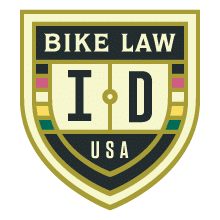It’s important to know your legal rights (and duties) when bicycling in Idaho. It is especially important after a bicycle accident (we call them bicycle “crashes” and explain why here).
This is a general overview of Idaho’s bicycle laws. To see them in their completion, please visit Idaho’s Department of Transportation. For any questions about this State’s bike laws, or about your rights to the road, contact Idaho’s Bike Law Attorney Kurt Holzer directly.
Right to the Road
Bicycles are defined as vehicles and generally have the same rights and responsibilities as motor vehicle drivers.
Where to Ride
- Bicyclists are required to ride as close as practicable to the right side of the roadway, when riding slower than the speed of traffic.
- Full lane use is allowed when traveling at the normal speed of traffic, preparing for a turn, overtaking and passing, avoiding hazards or unsafe conditions, traveling in a lane too narrow to share, and avoiding a mandatory turn lane.
- Bicyclists may, but generally are not required to, utilize any usable path for bicycles that has been provided adjacent to a roadway, however, in Boise City, bicyclists are required to use bike lanes immediately adjacent to the roadway. Check local ordinances for variations on this rule.
- Bicycles are permitted on sidewalks but must yield to the right-of-way of pedestrians and give an audible signal when passing pedestrians. Check local ordinances for variations on this rule.
HOW TO RIDE
- Bicyclists shall not ride more than two abreast within a single lane and may not impede the normal and reasonable movement of traffic.
- Bicyclists coming to a stop sign must slow, and if required for safety, stop. If no motor vehicle is approaching which causes an immediate hazard during the crossing of the intersection, the bicyclist may proceed through the stop sign without stopping. (Stop as yield)
- Bicyclists coming to a red light must stop and yield to all other traffic. If safe, the bicyclist may proceed through the intersection. (Stop Light as Stop Sign)
- Bicyclists must signal when turning or coming to a stop.
Bicyclists Overtaking Cars
Bicyclists on roadways must exercise due care when passing a standing vehicle or one proceeding in the same direction and may safely pass on this right of a car if there is unobstructed pavement sufficient for two or more lines of vehicles.
Cars Overtaking Bicyclists
Motor vehicle drivers are required to pass bicyclists in a way that does not interfere with the operation of the bicycle. In Boise City, motor vehicle drivers must give bicyclists at least three (3) feet clearance to pass.
Equipment
- At night, a bicycle must be equipped with a front white light and a rear red reflector visible from at least 500 feet away.
- Every bicycle should have brakes which enable the bicyclist to make the braked wheels skid on dry, level, clean pavement. In Boise City, every bicycle must be equipped with a brake which will stop the bike in 25 feet at ten miles per hour on dry, level, clean pavement.
Prohibitions
- Clinging to motor vehicles while bicycling is not permitted.
- A bicycle may not carry more than the number of persons for which it is designed, except adults carrying a child in a sling or backpack.
